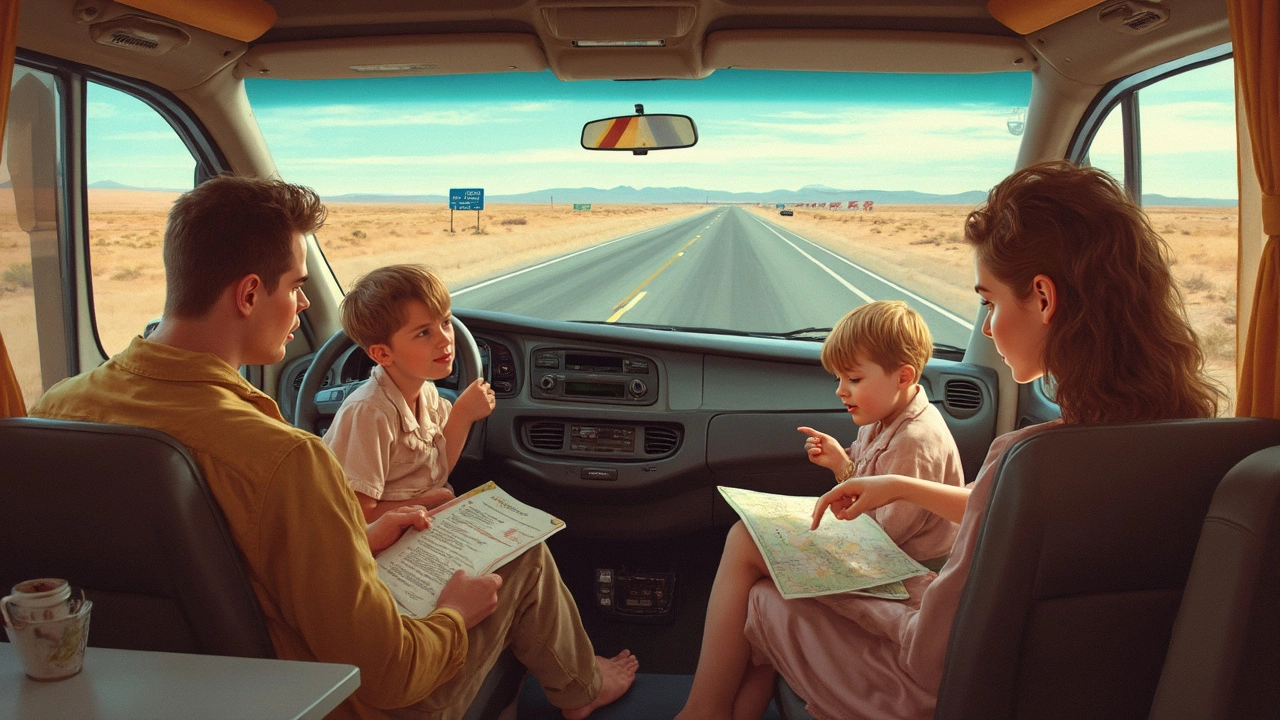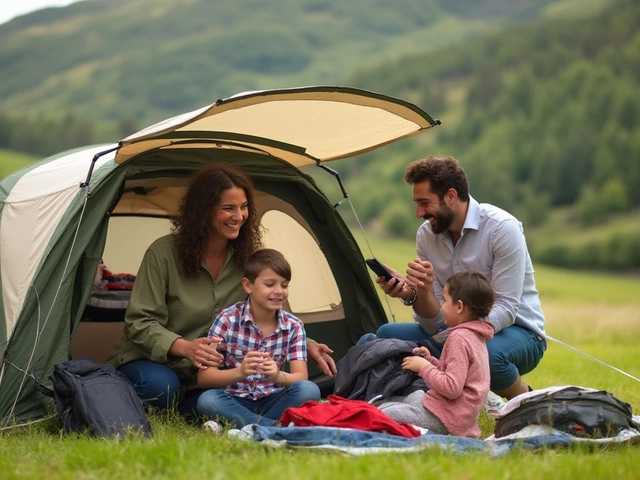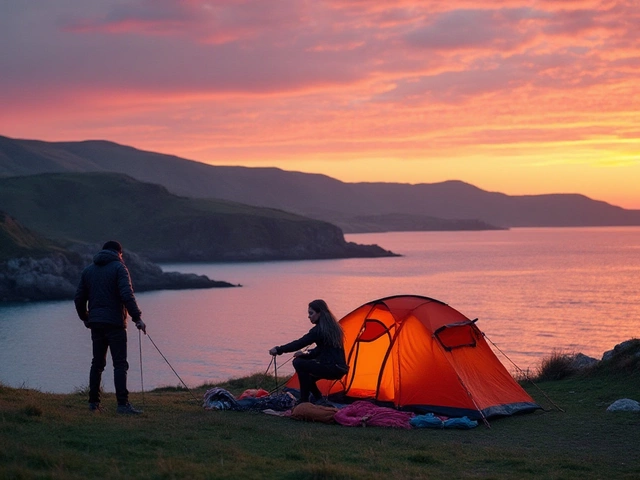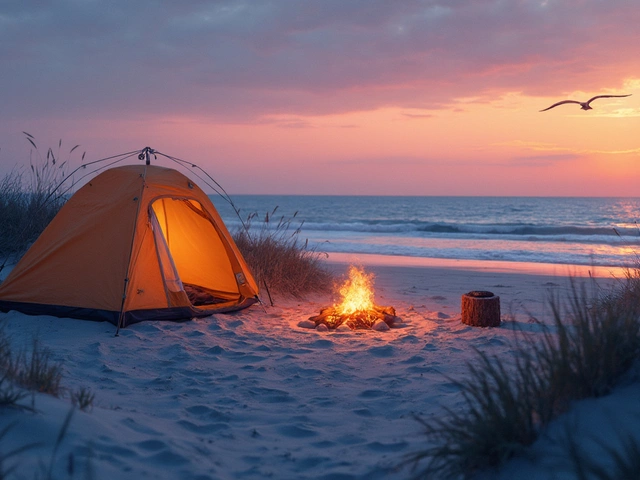Thinking about stretching out for a nap in the back of a moving motorhome across the States? Hold up—a lot of folks are surprised by the real answer. In most of the US, riding in a moving motorhome without being buckled up is against the law. Federal highway laws say every passenger has to wear a seatbelt when the vehicle is in motion, and this isn’t just for the front seats. It applies to the living area too, even if your RV feels like a rolling studio apartment.
Some states get pickier—like in California, kids can’t ride in the back of an RV at all unless it’s got seatbelts for everyone, and some rental companies won’t let you use the beds while driving no matter what. Don’t figure you can sneak a nap just because you see it on TV. If you get caught, you’re looking at fines, and worse, everyone’s safety is on the line. A sudden stop or accident? Lying down on a mattress does nothing to protect you.
- Sleeping in Motion: What the Law Says
- Safety Risks Beyond the Rules
- Hidden Insurance Pitfalls
- Smart Alternatives for Tired Travelers
Sleeping in Motion: What the Law Says
If you’re hoping to snooze while your motorhome rolls down the highway in the USA, you need to know the laws are stricter than most people think. Federal law is the big one here—it says all passengers, not just the driver, must be wearing seatbelts if the motorhome hire vehicle is moving. It doesn’t matter if you’re on a bed, couch, or swivel chair. If it isn’t a legal seat with a belt, it’s off-limits for napping while underway.
State laws don’t always match up, but most echo federal rules and even get more specific about kids. For example, in California and Texas, every seat needs a belt, and kids have to be in proper car seats just like in any normal car. New York is tough too—everyone, front or back, must buckle up.
Here’s a quick table so you see how things change state by state:
| State | Seatbelt Required in Living Area? | Kids Allowed in Living Area? |
|---|---|---|
| California | Yes, all seats | Only with proper restraints |
| Texas | Yes, all seats | Car seat rules apply |
| New York | Yes, all seats | Car seat rules apply |
| Nevada | Front seat, but rear highly recommended | Encouraged, not always enforced |
| Florida | Front seat, living area rules looser | Kids often must be belted |
One thing to keep in mind: many rental companies have their own rules that are often stricter than local laws. If you browse through the rental agreement, you’ll usually find a line saying beds aren’t for sleeping while moving. Break that policy, and you might void your insurance or even get charged if you get caught.
So, when you’re on that big American road trip, just remember: if the wheels are turning, everyone needs to buckle up in a legal seat. Keep those naps for rest stops—your wallet and your health will thank you.
Safety Risks Beyond the Rules
The legal stuff is just the start. Even if nobody’s looking, sleeping in a moving motorhome hire can get dangerous, fast. Think about it — your bed isn’t bolted to the chassis, and there are no seatbelts holding you down. If the driver hits the brakes or swerves, you could get thrown straight off the mattress. The National Highway Traffic Safety Administration (NHTSA) says most RV crashes happen on highways, especially during sudden stops or bad weather. In those moments, laying down means zero protection.
Dr. Ronald Reiter, an EMT who’s seen his share of RV wrecks, puts it like this:
“It doesn’t matter how comfortable your RV bed is — it won’t do anything to keep you in place during a crash. I’ve seen people bounce six feet across a motorhome when someone slams on the brakes.”
To give you some real numbers, here’s data from the most recent report by the NHTSA on RV incidents in the US:
| Year | RV Accidents (US) | Injuries in Living Area |
|---|---|---|
| 2022 | 14,356 | 2,106 |
| 2023 | 15,040 | 2,334 |
More than 1 in 7 reported RV injuries happen in the living area, meaning folks weren’t strapped in. It’s hard to spot a crash before it happens — deer, trucks cutting you off, or even bad potholes can flip things in seconds.
Other everyday stuff turns risky too. Hot drinks spill, sharp objects fly, and even something as basic as getting up to grab a snack can end with a twisted ankle or cracked head. RV seatbelts in the living space exist for a reason — they’re the only thing between you and a trip to the ER if things go south.
Bottom line: skipping seatbelts while the RV is moving isn’t just breaking rules. It’s asking for trouble, far away from help, and often hours from a hospital.
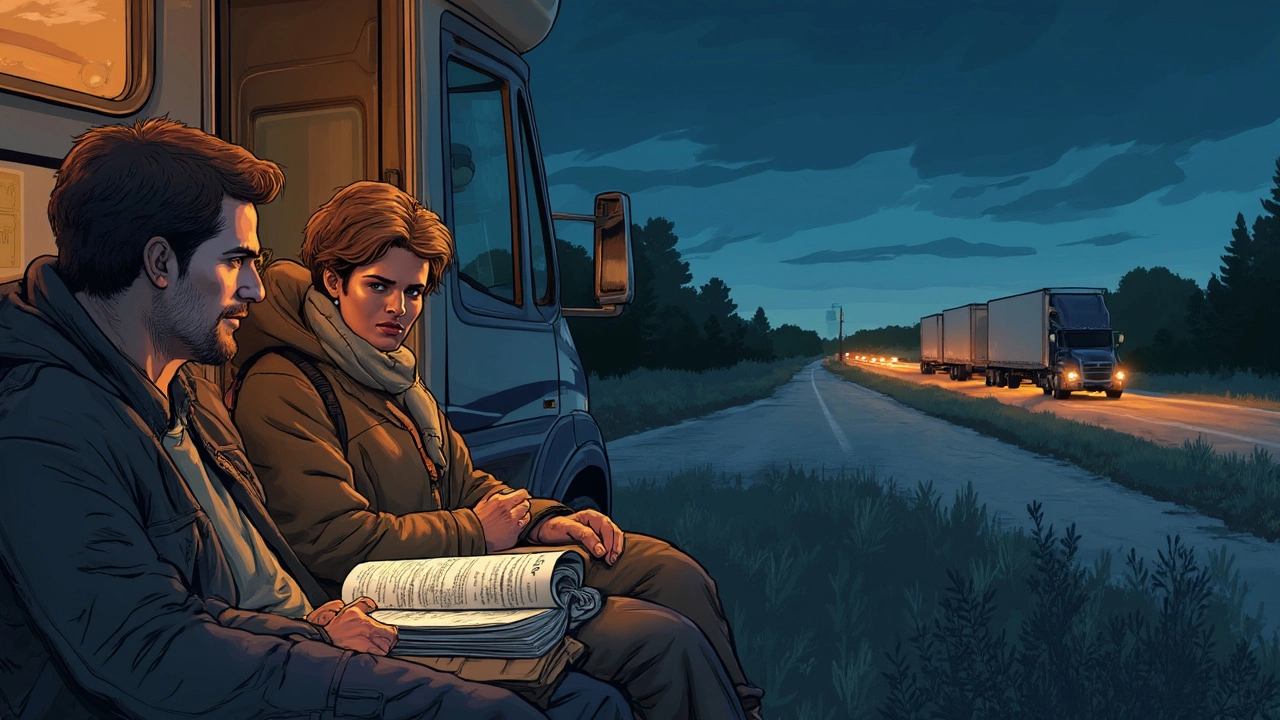
Hidden Insurance Pitfalls
Most travelers renting a motorhome don’t even think about the fine print on their insurance. Here’s the catch: if someone is asleep in the back while the motorhome is moving and they aren’t buckled in, almost every rental policy in the USA will deny your claim if there’s an accident. It doesn’t matter if you crash because of a deer or if another car rear-ends you—your insurance could leave you hanging with the entire bill.
Take a look at actual exclusions in popular rental policies. Cruise America, the largest RV rental company, spells it out in their terms: all passengers must use available seatbelts when the vehicle is on the road. Ignore that, and you may get stuck paying out of pocket for repairs, medical bills, and damages. Insurance companies check accident details—don’t assume they won’t dig into who was sleeping where.
To put it into perspective, here’s a quick breakdown of what most standard RV hire insurance covers—and what it excludes if you break the belt rule:
| Situation | Coverage if Belted | Coverage if Not Belted or Sleeping |
|---|---|---|
| Accident with Injury | Usually covered | Usually denied |
| Damage to Motorhome | Usually covered | Usually denied |
| Theft or Vandalism (parked) | Covered | Covered |
And here’s another kicker—if you bought extra coverage through your credit card, those benefits are void too if you weren’t following the law. Not wearing a seatbelt or sleeping in the back can turn your cross-country adventure into a wallet-busting nightmare in one unlucky moment.
- Read your hire agreement before you hit the road. Look for seatbelt, passenger, and sleeping restrictions.
- Ask rental staff directly—"What happens if someone’s lying down or unbuckled while driving?" Make them spell it out.
- Save every seatbelt and insurance clause on your phone so you can check the rules anytime.
If you want your motorhome hire trip to go smoothly, stick with the seatbelt rule—no matter how tired you get. Insurance is there to help, but only if you play by their rules.
Smart Alternatives for Tired Travelers
If you’re on a long road trip and finding it hard to stay awake, stopping safely is non-negotiable. It’s never worth the risk to ignore exhaustion just because you want to save time. The good news? There are a bunch of hassle-free ways to catch real rest without breaking any laws or risking your safety.
If you have a few hours before you need to be somewhere, plan your route with overnight stops in mind. Most interstate highways in the US have rest areas about every 30 to 50 miles. Many of these allow motorhome hire guests to park for plenty of hours so you can actually hit the beds, not just the seats. Truck stops are also super friendly for RVs—they’re well-lit, often have showers, and usually have a mix of snacks and coffee any time of day.
- Walmart parking lots: Many (though not all) Wal-Marts welcome motorhomes overnight for free—just check inside with a manager first.
- Campgrounds: Apps like Campendium or AllStays can show you nearby campgrounds or even free BLM (Bureau of Land Management) spots to park and sleep legally.
- Restaurants: Some national chains like Cracker Barrel are cool with RVers for short overnight stops, but always double-check the store’s local policy.
- Rest stops: Most states let you park for a few hours, though overnight sleeping rules vary, so check online before you rely on it.
Here’s a quick look at some popular stop types and what they offer:
| Stop Type | Parking Cost | Overnight Allowed? | Amenities |
|---|---|---|---|
| Walmart (most locations) | Free | Yes (with permission) | Restrooms (inside), security lights |
| Truck Stop | Free/Low cost | Yes | Showers, restrooms, food, fuel |
| Campground | $20–$80/night | Yes | Power, water, showers |
| Rest Area | Free | Short-term only | Restrooms, picnic tables |
One more tip—keep an eye on local rules and posted signs wherever you stop, especially in busy cities or tourist hotspots. It can be a lifesaver to have a couple of backup locations marked on your map just in case your first pick is full. And try not to push yourself; even a 20-minute nap can make a world of difference behind the wheel.
